
Number 13
October 11, 1978
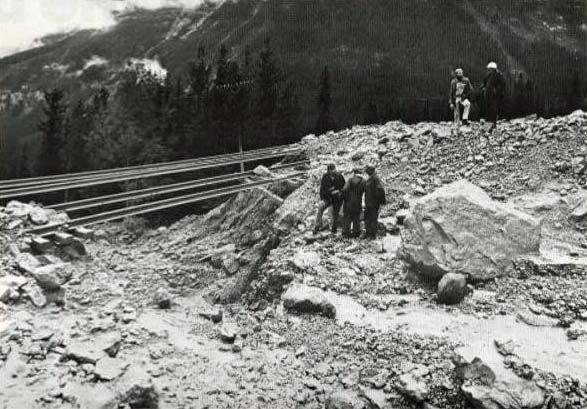
Siding. Mount Ogden slopes are in the background - Nicholas Morant.
Once a railroad has been constructed, a constant vigil must be kept. Men and equipment must be available to fight a battle with nature to keep the tracks clear.
At Cathedral Mountain, on the CP Rail line through the Rocky Mountains, adjacent to the Spiral Tunnels, the battles have been hard fought and the victories short-lived.
On 6 Sep 1978 at 21:00 hours the bursting of a natural ice dam at the foot of an immense glacier beneath the summit of Cathedral Mountain triggered a slide of water, rock, and silt that blocked the mainline in three places.
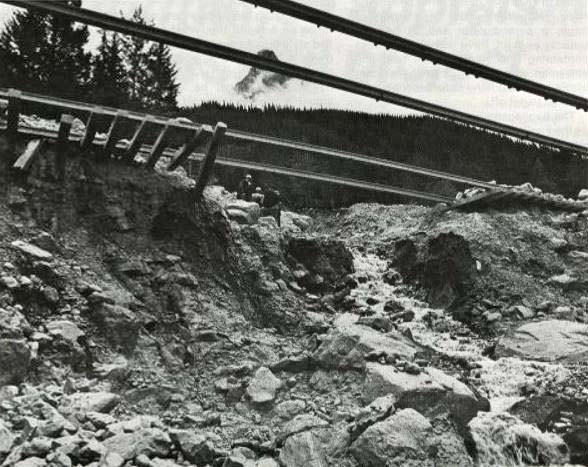
Cathedral Mountain spire, below which slide started - Nicholas Morant.
It took nearly 100 men 45 hours to clear the devastation and reopen the line.
For CP Rail, the battle of keeping the tracks open beneath Cathedral Mountain is not a new one. The area at which the slide occurred is infamous to many experienced railroaders. It has come to be known as the three level slide, because one slide can cover the mainline in three places.
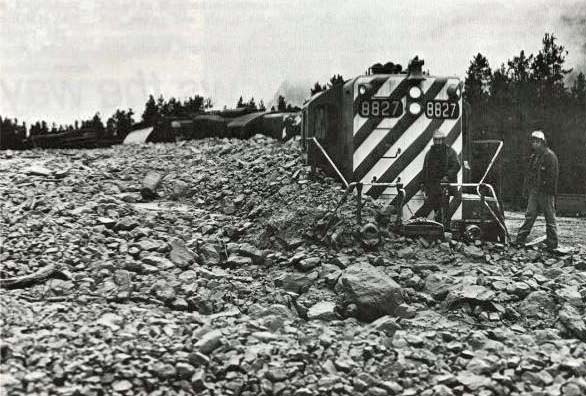
According to Alec Price, assistant regional engineer for the Pacific Region, stationed at Vancouver, the three level slide has a history of causing problems. Major slides occurred at the same location in 1925, 1927, 1946, 1962, and 1978. Several less severe slides also occurred during the same time period.
Mr. Price says that the slides are a result of the combination of a period of warm weather and heavy rains. The major slides at this location have occurred in August or September, when weather conditions seem to be most conducive.
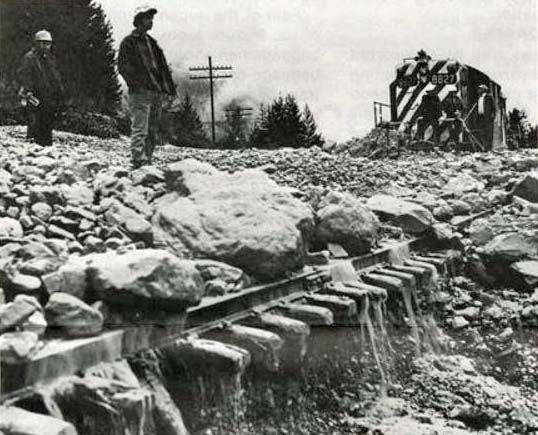
Irony and a twist of fate, however, created a unique situation at the most recent three level slide. Among the nearly 100 men on duty during the clean up were Bob Younger, divisional engineer Calgary Division, and Alec Price assistant regional engineer for the Pacific Region.
In 1946 the counterpart for Mr. Younger's duties and the counterpart for Mr. Price each shared the same last names. In 1946 each man's father was on duty.
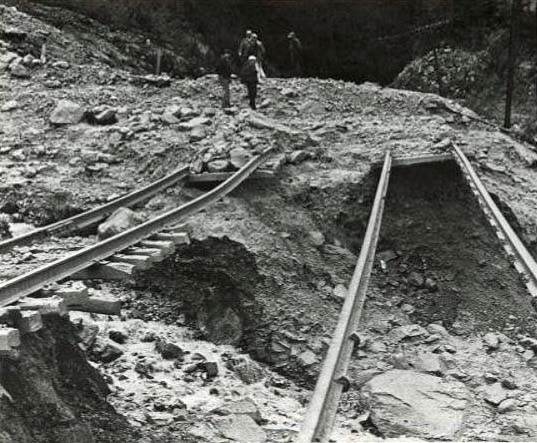
The three level slide site has also been witness to acts of heroism involving railway personnel. In 1925 an engineman named Seth Partridge heard the rumble of a slide above the roar of his locomotive. He stopped the train on the "high level" track and ran downhill warning the two occupants of a rest house at Yoho. The slide buried the building moments after it was emptied.
Partridge siding bears the name of Seth Partridge to commemorate his brave deed.

